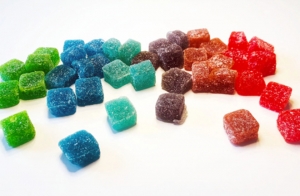please click here:
https://www.dragon-abrasives.com/abrasive-tools.html
Understanding the Role of Abrasive Tools in Modern Manufacturing
Abrasive tools are indispensable in modern industrial production, serving as the backbone for processes like grinding, polishing, cutting, and surface finishing. These tools use abrasive materials—natural or synthetic—to wear away a surface through friction, achieving the desired shape, size, or smoothness.
From aerospace precision grinding to everyday metal fabrication, abrasive tools ensure accuracy, consistency, and high-quality surface finishes that traditional cutting tools cannot easily match. With the continuous evolution of materials and production demands, the development of advanced abrasive tools has become central to manufacturing innovation.
What Are Abrasive Tools?
Abrasive tools are implements or devices that use abrasive grains bonded or coated on a substrate to remove material through mechanical action. The abrasive grains act as tiny cutting edges, shearing off microscopic chips from the workpiece.
The performance of an abrasive tool depends on several factors:
-
The type and hardness of the abrasive grain
-
The bonding material and density
-
The grain size and structure
-
The applied pressure and speed during operation
These variables determine the balance between cutting speed, surface finish, and tool longevity.
Major Types of Abrasive Tools
Bonded Abrasive Tools
Bonded abrasives are made by combining abrasive grains with bonding agents such as resin, rubber, or ceramic. They are commonly found in grinding wheels, mounted points, and segments.
Applications: Surface grinding, precision finishing, tool sharpening, and metal cutting.
Coated Abrasive Tools
In coated abrasives, abrasive grains are fixed to a flexible backing material such as paper, cloth, or polyester. Sandpaper and abrasive belts are typical examples.
Applications: Surface finishing, sanding, and polishing of metals, wood, and composites.
Superabrasive Tools
Superabrasive tools utilize materials like diamond or cubic boron nitride (CBN), offering extreme hardness and long service life.
Applications: High-precision grinding, machining of hard alloys, ceramics, and optical components.
Loose Abrasives
Loose abrasives are powders or pastes used for polishing, lapping, and cleaning operations where high surface smoothness is required.
Applications: Optical lens finishing, semiconductor polishing, and fine metal finishing.
Comparison of Common Abrasive Tool Types
| Type of Abrasive Tool | Common Materials Used | Key Advantages | Typical Applications |
|---|---|---|---|
| Bonded Abrasives | Aluminum oxide, Silicon carbide | High strength, suitable for hard metals | Grinding, cutting, tool sharpening |
| Coated Abrasives | Zirconia alumina, Ceramic | Flexible, easy to shape | Sanding, deburring, polishing |
| Superabrasives | Diamond, CBN | Extremely durable, precise | Precision grinding, optical finishing |
| Loose Abrasives | Diamond paste, Aluminum oxide powder | High smoothness, adjustable | Polishing, lapping, fine finishing |
This comparison helps users identify which abrasive tool is best suited for their process based on required finish quality, material type, and cost-effectiveness.
How Abrasive Tools Work
The cutting mechanism of an abrasive tool involves numerous sharp grains that act as cutting edges. When pressed against a workpiece, each grain penetrates slightly, removing material in the form of microscopic chips.
The performance depends on:
-
Abrasive hardness: Determines its ability to cut through tough materials.
-
Grain size: Smaller grains produce finer finishes; larger grains remove material faster.
-
Bond strength: Stronger bonds increase tool durability but may reduce cutting speed.
-
Coolant usage: Prevents overheating and improves surface quality.
An optimal balance among these factors ensures high productivity and longevity of both tool and workpiece.
Selecting the Right Abrasive Tool
Choosing the right abrasive tool requires understanding the material properties and desired outcome. Below are key factors to consider:
-
Workpiece Material: Harder materials require harder abrasives like CBN or diamond, while softer metals can use aluminum oxide.
-
Desired Surface Finish: Coarse grains for rapid stock removal; fine grains for smooth surfaces.
-
Machining Speed: Higher speeds demand abrasives with thermal resistance and strong bonding.
-
Coolant Compatibility: Some abrasives require lubrication to avoid thermal damage.
-
Cost vs. Longevity: While superabrasives have higher upfront costs, they provide longer tool life and lower maintenance.
Industrial Applications of Abrasive Tools
Abrasive tools are essential across a wide range of industries:
-
Metalworking: Grinding and finishing metal components, tool sharpening, and deburring.
-
Automotive: Polishing engine parts, surface preparation before coating, and precision grinding.
-
Aerospace: Machining turbine blades, polishing composite surfaces, and producing high-tolerance components.
-
Construction: Cutting concrete, stone, and ceramic materials.
-
Woodworking: Sanding and finishing furniture or flooring.
-
Electronics: Lapping and polishing semiconductor wafers and connectors.
Each sector demands specific abrasive performance in terms of accuracy, durability, and cost efficiency.
Innovations in Abrasive Tool Technology
Recent technological developments have greatly improved the performance and sustainability of abrasive tools:
-
Nanostructured Abrasives: Provide superior cutting precision and heat resistance.
-
Hybrid Bond Systems: Combine the toughness of resin with the rigidity of ceramic for better performance.
-
Eco-Friendly Coatings: Reduce waste and use water-based bonding agents.
-
Smart Abrasives: Integrated sensors track wear rate and optimize grinding parameters in real time.
These innovations make abrasive tools more efficient, environmentally friendly, and adaptive to modern manufacturing demands.
Maintenance and Safety Tips for Abrasive Tool Users
Proper maintenance ensures longer tool life and safe operation:
-
Store tools in dry, cool environments to prevent bond degradation.
-
Regularly inspect for cracks, uneven wear, or imbalance.
-
Follow recommended RPM limits to avoid breakage.
-
Use protective equipment such as goggles, gloves, and face shields.
-
Clean the work area to reduce dust accumulation and maintain performance.
Safety is critical because high-speed abrasives can pose serious hazards if mishandled.
Future Trends in Abrasive Tool Development
The future of abrasive tools points toward smart automation and sustainability. Digital monitoring systems and AI-based process optimization will allow real-time control of grinding parameters, reducing energy use and improving consistency.
Additionally, biodegradable bonding materials and recyclable abrasives will become increasingly important as industries strive for greener manufacturing.
Frequently Asked Questions
1. What is the difference between bonded and coated abrasives?
Bonded abrasives are solid structures like grinding wheels, while coated abrasives have abrasive grains attached to flexible backings such as cloth or paper.
2. Which abrasive material is the hardest?
Diamond is the hardest abrasive material, followed by cubic boron nitride (CBN).
3. Can abrasive tools be reused?
Most bonded and coated abrasives wear down with use, but some superabrasive tools can be reconditioned or re-plated for reuse.
4. Are abrasive tools suitable for non-metal materials?
Yes. They are widely used on ceramics, plastics, composites, and even glass, depending on the abrasive type.
5. How do I increase the lifespan of an abrasive tool?
Use the correct pressure, speed, and coolant; avoid excessive heat; and regularly clean and store tools properly.
Summary
This comprehensive guide explores abrasive tools, covering their types, functions, and industrial uses. It includes comparisons, selection advice, maintenance tips, and insights into emerging technologies like smart and eco-friendly abrasives, helping industries improve efficiency and precision.






